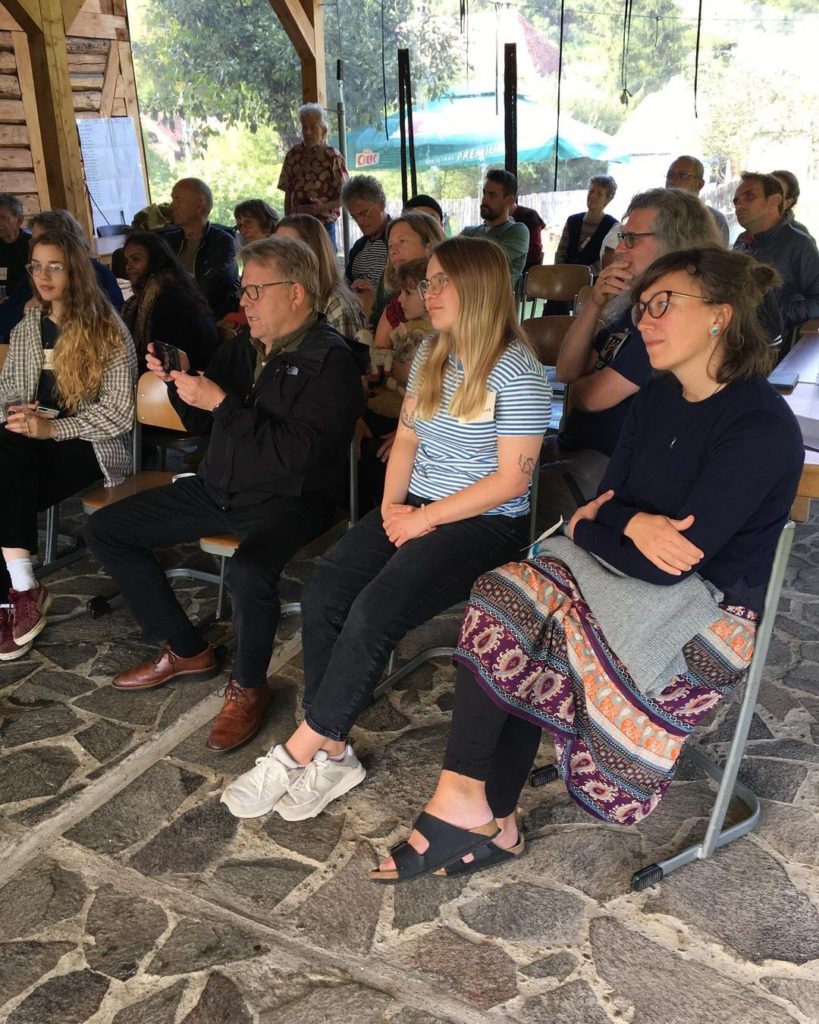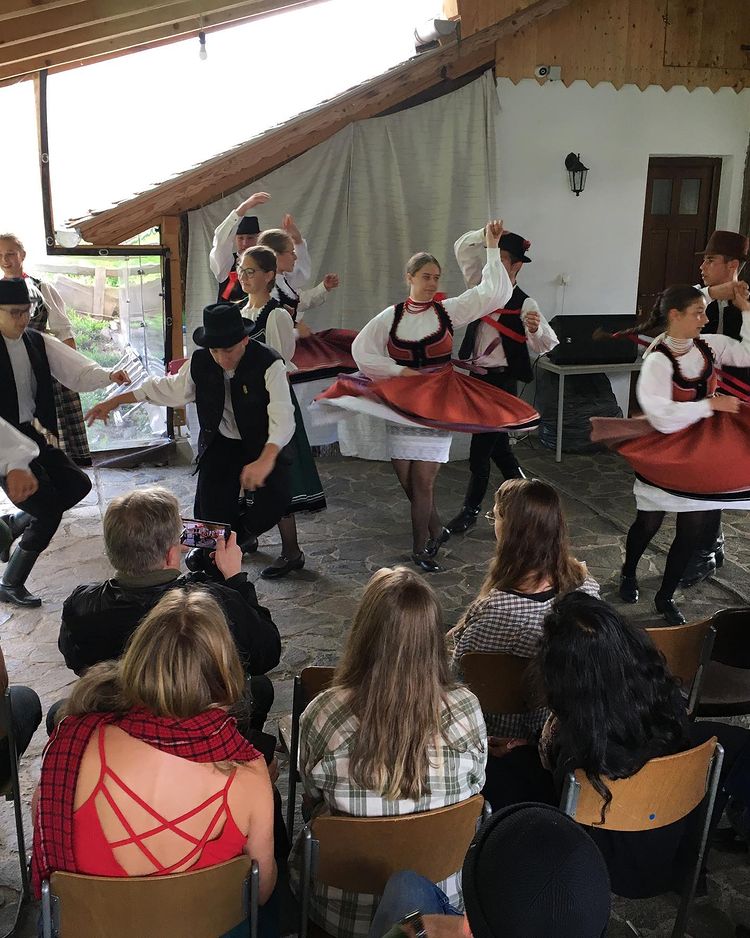The 41st NAFA film festival took place from 7 to 11 September in the village of Csehétfavla/Cehetel in Harghita County in Transylvania, Romania, with around 30 participants present.
Locally hosted and organised by the visual anthropologists Orsolya and Ralph Veraart (former Visual Culture students from UiT, Norway) and accommodated by Tünde Lőrinczi and her Unitarian Church minister husband Lajos in their beautifully renovated Center for Traditional Szekler Future, the scene was set for intense film days. Warnings about bears roaming the woods around the village (some participants even claiming to have heard their growling at night or seen their poo in the morning) together with some very real encounters with packs of aggressive dogs, kept participants inside to watch films and in the two hot tubs inside the compound after a long-day’s watch.
The fact that it was 10 years since my last NAFA film festival, and 9 since I had been on its film selection committee, made it possible to see that the field of visual anthropology / ethnographic filmmaking has been in the process of change over the last decade. While, as earlier, a wide range of topics from all over the world where insightfully addressed, the range of filmic modes of representation had expanded significantly. It included not only observational films and ethnographic documentary – where “Half Elf” (Iceland, by Jón Bjarki Magnússon, 2020), “We used to sing” (Israel, by Lidia Morozov 2021), and “Ophir” (Papua New Guinea, by Alexander Berman and Olivier Pollet, 2020) stood out for me – but also ethno-drama and/as collaborative projects like “Dea” (Indonesia/Hong Kong, by Alberto Gerosa, 2021) as well as other more experimental attempts to convey anthropological knowledge like in “You know, Like, Zoom” (USA, by Jeffrey Ruoff, 2021).

This varied mix of approaches to different anthropological themes resulted in, for me at least, not wanting to miss one single film in the packed program from 9 in the morning to 8 at night – sometimes 9 because of the engaged discussions. (In fact, I only dosed off once). Because of the tight program, where Gábor Bóné handled perfectly the technicalities of both screening and connecting those filmmakers, who were not present, on Zoom, it was suggested to include fewer films next year to allow for more time for discussions. It was also suggested that one session with more overall discussions on visual anthropology / ethnographic filmmaking based on the screened films could be included at the end of future festivals. For example, one such issue which arose in the course of the film screenings this year, and which would have been interesting to discuss in more depth, was the use of arranged situations to allow for conversations to emerge – like in “A Colombian Family” (Colombia/Cuba, by Tanja Wol Sørensen, 2020) and “Among Us Women” (Ethiopia, by Sarah Noa Bozenhardt and Daniel Abate Tilahun, 2021) – as opposed to recording a scene or dialogue just as it happens. For me, these two films were very powerful since the main protagonists also chose to use the presence of filmmakers to talk about issues that otherwise would have been difficult to reveal to anyone in the community – even to close relatives. In relation to the latter film from Ethiopia which was beautifully shot, it seems however that some continue to be skeptical to aesthetics in anthropological films. Another issue that surfaced was differences between local and dominant (Western) modes of representation in relation to time and space as well as the act of being seen as in “All Eyes on Me!” (Kenya, by Robert Weijs, 2021). And not all liked the increased use of drones.

The lively performance of a local Hungarian folk-dance group and musicians performing local traditional folk songs the first and final evening was much appreciated by the festival participants. The whole-day horse-cart ride around the area on the last day (11 September), ending with a roller-coaster descent through the muddy forest where even thinking about taking up a camera was out of the question (since all attention was on not falling off the cart), also contributed to making this film festival memorable for life. Hence, it might be hard to try for the organisers of upcoming NAFA film festivals to live up to this year’s event in Transylvania.
On a final note: While it was announced that Beate Engelbrecht had become an honorable member of NAFA for her lifelong contribution to visual anthropology both as a practitioner, organiser of the German Ethnographic Film Festival in Göttingen and editor of the online journal Anthrovision, the significant presence at this year’s festival of a younger enthusiastic generation that are involved in diverse approaches to ethnographic filmmaking, also bodes well for the future, not only for NAFA, but for the field itself.
(More photos and videos available on the film festival instagram page)
